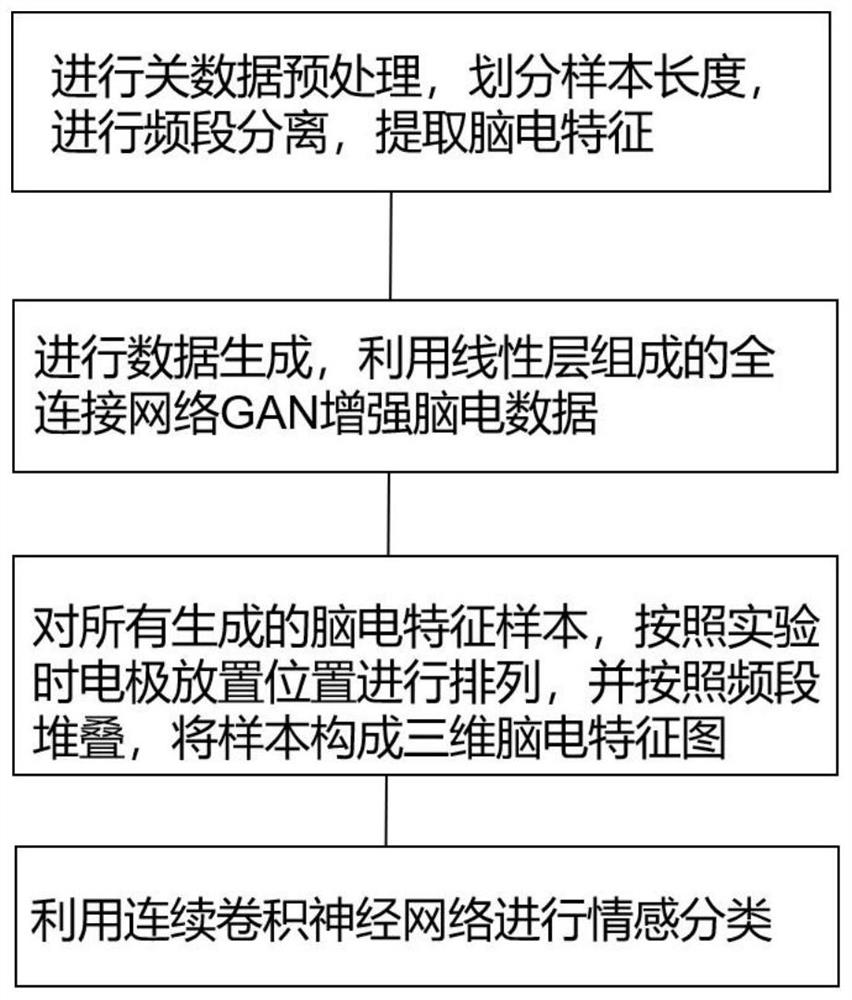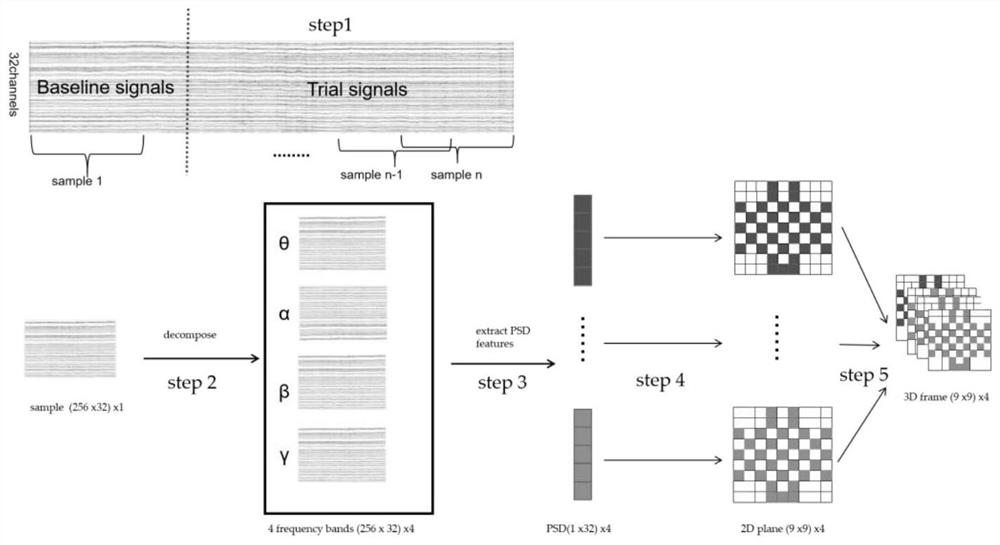Electroencephalogram emotion recognition method based on generative adversarial network data enhancement
A technology of emotion recognition and network data, which is applied in the field of EEG emotion recognition, can solve problems such as insufficient samples and imbalance between sample classes, and achieve the effects of improving quality, conveniently generating data, and solving insufficient training samples
- Summary
- Abstract
- Description
- Claims
- Application Information
AI Technical Summary
Problems solved by technology
Method used
Image
Examples
Embodiment
[0050] Embodiment: An EEG emotion recognition method based on generative adversarial network data enhancement, which solves the problems of insufficient samples and imbalance between sample classes in the field of EEG emotion recognition.
[0051] First determine the length of the EEG sample, the length of the slice within the sample, and the slice window shift, slice the EEG sample, and decompose it into four different frequency bands; then calculate the EEG signal features on each channel frequency band, and use all the calculated features Splicing into a one-dimensional feature vector and inputting it into the generative confrontation network for training. After the training is completed, the network generates a large number of high-quality EEG samples, and then the generated EEG feature vector and the original EEG feature vector are collected according to the EEG signal. The location information of electrode placement is rearranged and spliced according to frequency bands...
PUM
 Login to View More
Login to View More Abstract
Description
Claims
Application Information
 Login to View More
Login to View More - R&D
- Intellectual Property
- Life Sciences
- Materials
- Tech Scout
- Unparalleled Data Quality
- Higher Quality Content
- 60% Fewer Hallucinations
Browse by: Latest US Patents, China's latest patents, Technical Efficacy Thesaurus, Application Domain, Technology Topic, Popular Technical Reports.
© 2025 PatSnap. All rights reserved.Legal|Privacy policy|Modern Slavery Act Transparency Statement|Sitemap|About US| Contact US: help@patsnap.com



